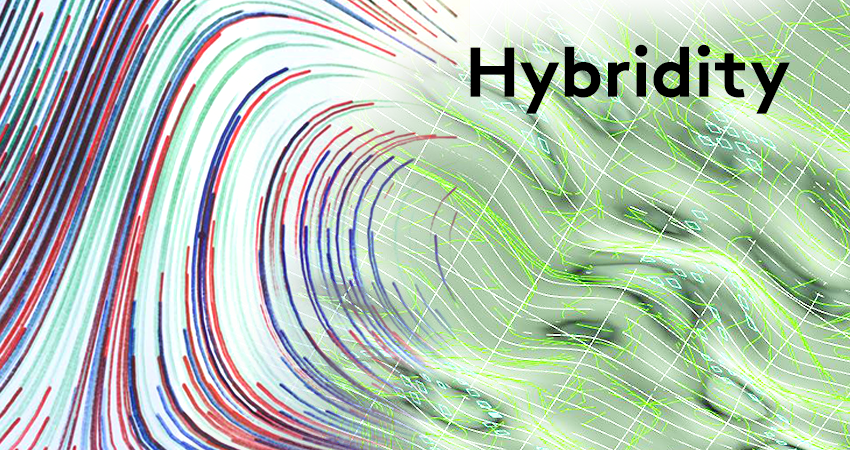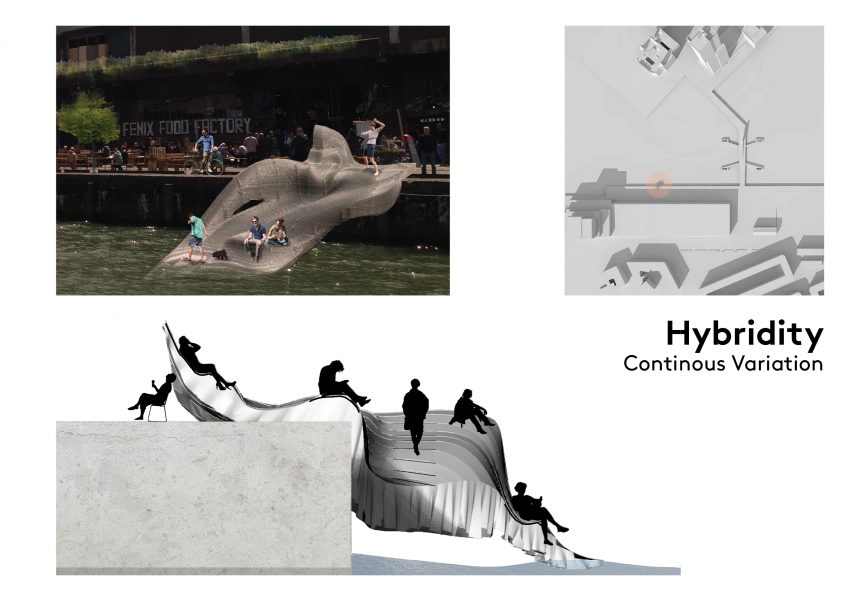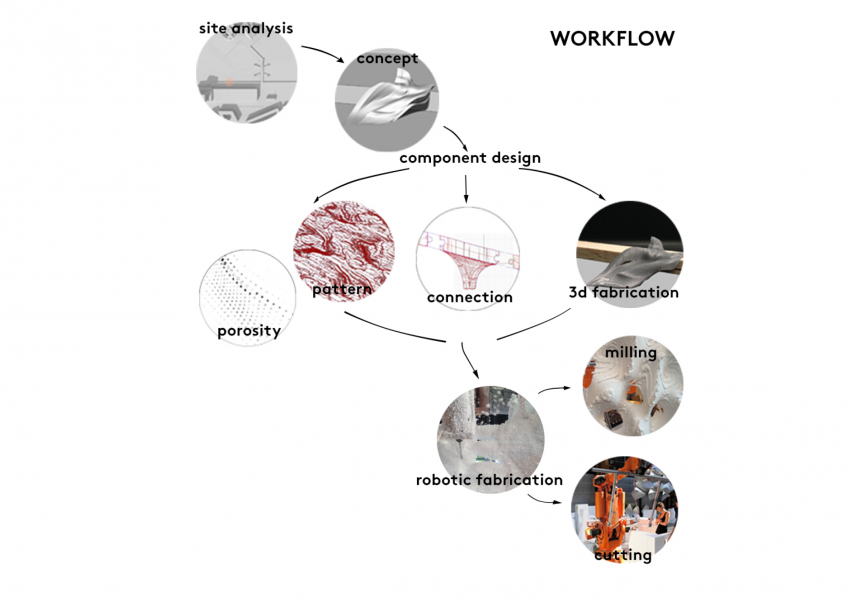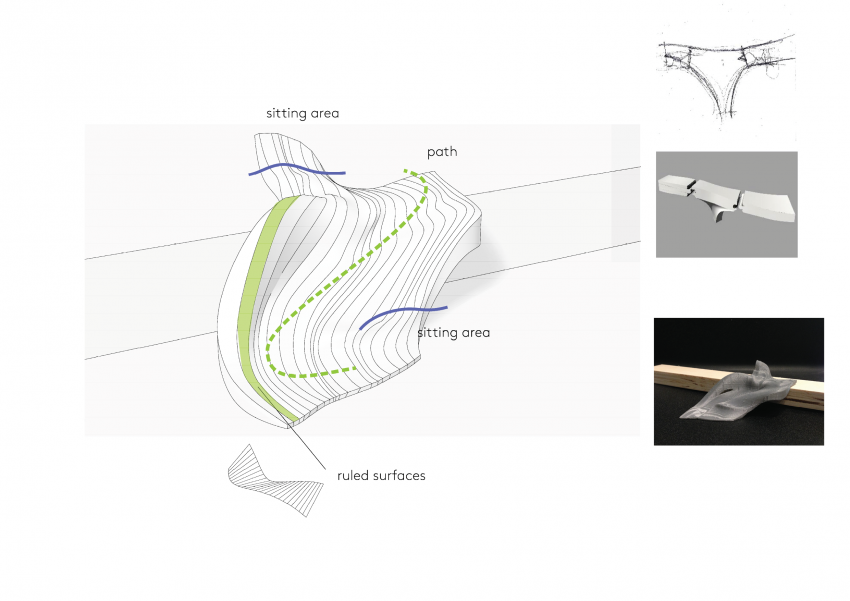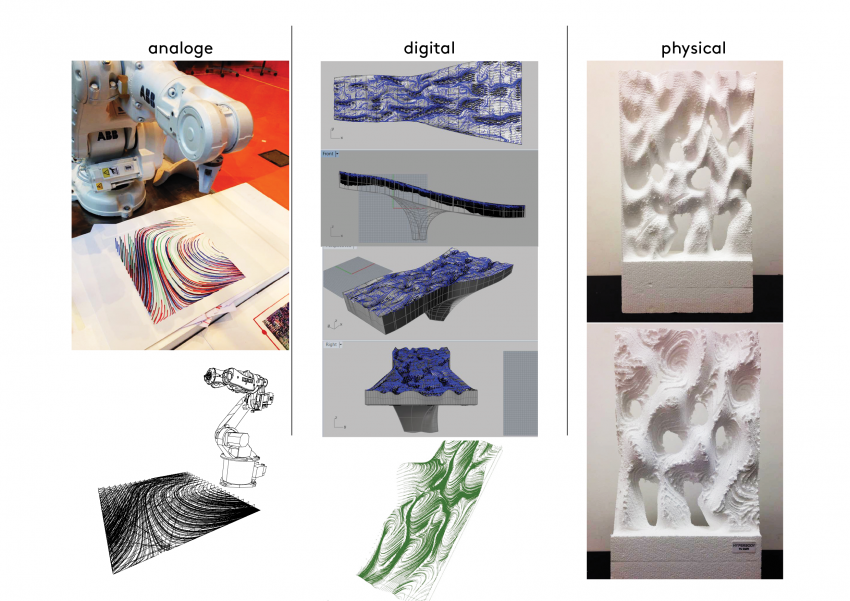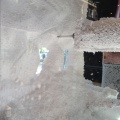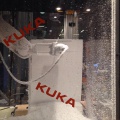Difference between revisions of "project01:InDeSem"
From re
Marco Galli (Talk | contribs) |
(→ROBOTIC FABRICATION SLIDESHOW) |
||
| (72 intermediate revisions by 3 users not shown) | |||
| Line 5: | Line 5: | ||
__NOTOC__ __NOTITLE__ | __NOTOC__ __NOTITLE__ | ||
| − | [[File: | + | [[File:G1_Hybridity_header_2.png | 850px]] |
---- | ---- | ||
| Line 11: | Line 11: | ||
---- | ---- | ||
| − | ''' | + | '''A Hybrid''' describes something of mixed origin or composition. It can also be defined as the interaction of components that produce the same or similar results. The mixing of components lets them inform and improve one another. The hybrid can consist of several materials or elements but also techniques or species. The project focuses on the connection and continuous variation of surfaces and elements. Using two robotic production methods: hot wire cutting and milling. |
=='''DESIGN CONCEPT DIAGRAM'''== | =='''DESIGN CONCEPT DIAGRAM'''== | ||
| − | |||
| − | + | [[File:Final_presentation.png | 850px]] | |
| − | + | [[File:Final_presentation2.png | 850px]] | |
| − | [[File: | + | [[File:Final_presentation3.png | 850px]] |
| + | [[File:Final_presentation4.png | 850px]] | ||
=='''ROBOTIC FABRICATION SLIDESHOW'''== | =='''ROBOTIC FABRICATION SLIDESHOW'''== | ||
IMAGES OF EXPERIMENTS & PROTOTYPE: small text on each image explaining material, scale, etc | IMAGES OF EXPERIMENTS & PROTOTYPE: small text on each image explaining material, scale, etc | ||
| − | + | <gallery> | |
| + | image:3d_print.jpg|MACRO - 3d printing the global shape | ||
| + | image:11414437_10153882385913906_1435144045_n.jpg| water current and grip pattern | ||
| + | image:11279967_10153882623023906_1840696284_n.jpg | ||
| + | image:2015-06-04_13.37.54.jpg|MICRO - Milling the texture on a test object | ||
| + | image:2015-06-04_14.20.45.jpg|from both sides | ||
| + | image:11418395_10153882623018906_665647330_n.jpg | ||
| + | image:11279928_10153882551013906_724700202_n.jpg | ||
| + | image:11280200_10153882551008906_2077495900_n.jpg | ||
| + | image:11313191_10153882623013906_113454448_n.jpg | ||
| + | |||
| + | </gallery> | ||
=='''WORKSHOP VIDEO'''== | =='''WORKSHOP VIDEO'''== | ||
| − | + | <div><html> | |
| + | <iframe src="https://player.vimeo.com/video/129859951" width="850" height="450 | ||
| + | " frameborder="0" webkitallowfullscreen mozallowfullscreen allowfullscreen></iframe> <p><a href="https://vimeo.com/129859951">InDeSem 2015 - Re:Craft - Hyperbody - Hybridity</p> | ||
| + | </html> | ||
| + | |||
| + | =='''WORKSHOP REFLECTIONS'''== | ||
| + | |||
| + | '''Participants''' with different skills and variing computing experience created a lively dynamic of analog and digital processing. The direct interaction with the robots and machines helped each of them to get a better understanding of the processes and the implication of craft in the digital process. | ||
Latest revision as of 13:12, 5 June 2015
InDeSem 15 | GROUP 1
Group 1 members: Maciej Bajor, Roberto Cappuzzello, Maria Gavrilenko, Milou van Min, Hans de Jonge, Marirena Kladeftira, Lillith Kreiss
A Hybrid describes something of mixed origin or composition. It can also be defined as the interaction of components that produce the same or similar results. The mixing of components lets them inform and improve one another. The hybrid can consist of several materials or elements but also techniques or species. The project focuses on the connection and continuous variation of surfaces and elements. Using two robotic production methods: hot wire cutting and milling.
DESIGN CONCEPT DIAGRAM
ROBOTIC FABRICATION SLIDESHOW
IMAGES OF EXPERIMENTS & PROTOTYPE: small text on each image explaining material, scale, etc
WORKSHOP VIDEO
InDeSem 2015 - Re:Craft - Hyperbody - Hybridity
